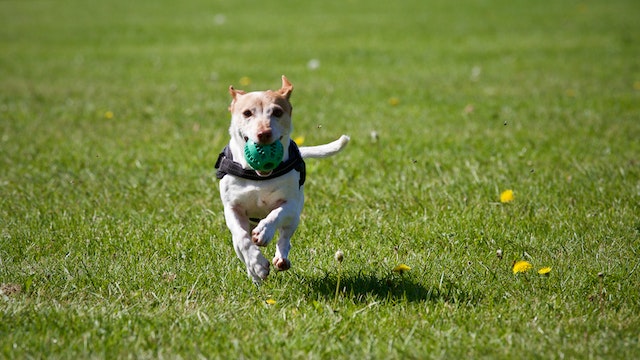Dogs are not only our best friends but also remarkably intelligent and trainable creatures. Teaching your dog tricks is not just a fun pastime; it’s a fantastic way to bond with your furry companion, mentally stimulate them, and keep them engaged. In this comprehensive guide, we’ll walk you through the process of teaching your dog some cool tricks that will not only impress your friends but also enhance your dog’s mental and physical abilities.
Why Teach Your Dog Tricks?
Teaching your dog tricks goes beyond entertainment; it offers numerous benefits for both you and your furry friend:
Mental Stimulation
Dogs thrive on mental challenges. Learning new tricks stimulates their cognitive abilities, keeping their minds sharp and active. Mental stimulation can also alleviate boredom and prevent behavioral issues caused by excess energy.
Dogs are naturally curious and eager to learn, and providing them with mental exercise through trick training can be highly satisfying for them. Learning tricks engages their problem-solving skills and keeps their brains occupied in a positive way. It’s like giving your dog a mental workout that leaves them content and fulfilled.
Bonding and Communication
Training sessions strengthen the bond between you and your dog. It’s a time of shared experiences, trust-building, and positive reinforcement. Clear communication during training fosters a deeper connection. The more time you spend working with your dog, the stronger your bond becomes.
Furthermore, teaching tricks creates a sense of teamwork between you and your pup. As they learn to respond to your cues, you both become better at understanding each other. This improved communication can extend beyond trick training and enhance your day-to-day interactions with your dog.
Physical Exercise
Many tricks involve physical activity, which helps maintain your dog’s health and fitness. This is especially important for dogs prone to weight gain or those with high energy levels.
When your dog learns tricks that involve movement, such as “spin” or “jump,” they get a chance to burn off energy in a constructive manner. This physical exercise is not only beneficial for their overall health but also reduces the likelihood of them engaging in undesirable behaviors due to excess energy.
Improved Obedience
Teaching tricks reinforce basic obedience commands like “sit,” “stay,” and “come.” This can improve your dog’s overall behavior and responsiveness to your commands.
For example, when you teach your dog to “sit” as part of a trick routine, they become more proficient at sitting on command in various situations. This newfound obedience can make daily activities, like going for walks or interacting with other dogs, more manageable and enjoyable.
Getting Started
Before diving into training, consider the following prerequisites:
1. Basic Obedience
Ensure your dog has a solid grasp of basic commands like “sit,” “stay,” and “down.” These commands serve as the foundation for more advanced tricks. If your dog is not familiar with these basics, it’s a good idea to start there before moving on to trick training.
Basic obedience training creates a framework of understanding between you and your dog. It establishes your role as the leader and sets the stage for successful trick training. Remember that patience and consistency are key during this foundational phase.
2. Patience and Consistency
Training takes time, and every dog learns at its own pace. Be patient with your dog and yourself. Avoid becoming frustrated if progress is slow, and always end training sessions on a positive note, even if it means celebrating small achievements.
Consistency is equally important. Use the same cues and rewards consistently so your dog can understand what you expect from them. Dogs thrive on routine, and the more consistent you are, the easier it is for them to grasp the concepts you’re teaching.
3. Treats and Toys
Stock up on small, tasty treats that your dog loves. You can also use toys as rewards, especially if your dog is more toy-motivated. The choice of rewards depends on your dog’s preferences. Some dogs are highly food-driven, while others are more motivated by play and toys.
Experiment with different treats and toys to determine what motivates your dog the most. This will help keep training sessions exciting and rewarding for them.

Fun and Impressive Tricks to Teach Your Dog
Now that you’re prepared to embark on your trick-training journey, let’s explore some cool tricks you can teach your dog:
1. Sit Pretty
Teaching your dog to sit up on their hind legs is not only adorable but also impressive. Start by having your dog sit, then hold a treat above their head. Slowly move it upwards, encouraging them to lift their front paws off the ground. As they do, say “sit pretty” and reward them.
This trick not only showcases your dog’s balance but also strengthens their core muscles. It’s a delightful way to engage their physical and mental faculties.
2. Shake Hands
A classic trick that’s both charming and useful. Begin by having your dog sit. Hold a treat in your closed hand and offer it to your dog, just out of reach. Say “shake” and wait for them to paw at your hand. When they do, reward and praise them.
“Shake hands” is a versatile trick that can serve as a friendly greeting when guests come over. It’s also a fun way for your dog to interact with people and demonstrate their polite manners.
3. Roll Over
This trick requires some patience. Ask your dog to “lie down.” Hold a treat close to their nose and move it in a circular motion towards their shoulder. Your dog should follow the treat with their nose and naturally roll over. When they complete the roll, reward them and say “roll over.”
“Roll over” is an entertaining trick that demonstrates your dog’s agility and responsiveness. It’s sure to impress friends and family.
4. Play Dead
A dramatic and entertaining trick. Start with your dog in a “down” position. Hold a treat near their nose and slowly move it towards the ground, parallel to their body. As they follow the treat and lie on their side, say “play dead” and reward them.
“Play dead” is not only a crowd-pleaser but also a testament to your dog’s ability to follow complex commands. It’s a great trick to showcase their obedience.
5. High-Five
Similar to “shake hands,” this trick involves a more dynamic interaction. Ask your dog to “sit.” Hold a treat in your hand and raise it slightly. When your dog raises their paw to reach for the treat, say “high-five” and reward them with the treat.
“High-five” adds an element of fun and enthusiasm to your dog’s repertoire. It’s a playful way for your dog to engage with you and others.
6. Speak or Be Quiet
Teaching your dog to bark on command (“speak”) and to stop barking (“be quiet”) can be practical. Start by getting your dog excited, so they naturally bark. When they do, say “speak” and reward. To teach “be quiet,” wait for a lull in their barking, then say “be quiet” and reward when they stop.
These commands offer practical benefits in managing your dog’s behavior. For instance, “speak” can be a fun party trick, while “be quiet” can be a valuable tool to prevent excessive barking.
Tips for Successful Training
To ensure successful training sessions:
- Keep sessions short and enjoyable. Aim for 10-15 minutes at a time. Dogs have limited attention spans, so shorter, focused sessions are more effective.
- Use positive reinforcement with treats, praise, and toys. Reward your dog immediately when they performs the desired behavior. Consistent and timely rewards help reinforce the connection between the behavior and the reward.
- Be consistent with your cues and rewards. Use the same verbal cues and hand signals each time you teach a trick. Consistency helps your dog understand what you want from them.
- Practice in a quiet, distraction-free environment initially. When introducing a new trick, choose a quiet space with minimal distractions. As your dog becomes more proficient, gradually add distractions to test their ability to focus.
- Gradually add distractions as your dog becomes more proficient. Once your dog has mastered a trick in a controlled environment, practice it in different settings with increasing levels of distraction. This helps your dog generalize the behavior and perform it reliably in various situations.
Conclusion
Teaching your dog tricks is a rewarding endeavor that enhances your bond and provides mental and physical stimulation. Remember, each dog is unique, so tailor your training to their individual needs and abilities. Celebrate small victories and have fun throughout the process.

